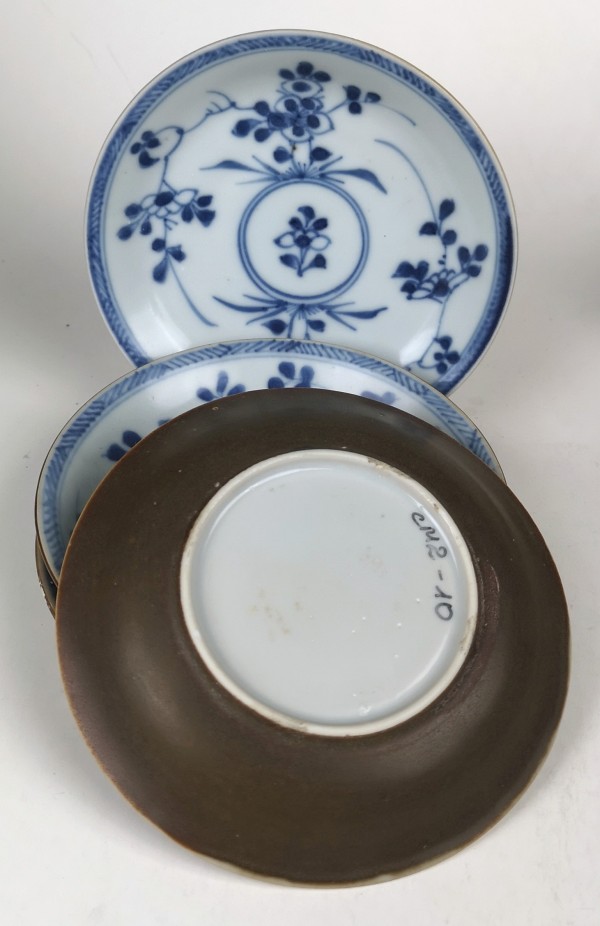
Underglaze blue and white Chinese export porcelain with the underside of the dishes covered in Batavia brown glaze. Chinese export porcelain from the Ca Mau find, dated to c. 1723-35.
A decorative style within Chinese export porcelain using a surface covering brown glaze with or without panels in conjunction with underglaze blue or various enamels like famille rose or Imari. The wares appears to have been named after the city of Batavia (modern days Jakarta) which at that time was the Dutch East India Company trading center in South East Asia.
The decoration also seems to have been particularly popular with the Dutch to which the word Batavia could have been used as a synonym due to the Chinese junk trade and the trans-shipping onto Dutch ships via Batavia.
Export wares with this decoration were common throughout the first half of the 18th century and included rounded dishes, vases, tea pots, tea bowls, saucers, lidded jars and other useful wares.
The style was preceded by a similar in light Celadon green, with or without combinations of under-glaze blue, appearing c. 1660-80 in both Japanese Arita wares and in Chinese porcelain.
In Kangxi period porcelain it is also common to find pieces where a brown background are combined with panels of underglaze blue or Famille rose or Imari enamel decoration, for example on small rose water sprinklers and water bottles.
As one of the earliest examples of 'Batavian' style iron brown glazes with wucai style enamels within panels, is a square Japanese Arita ware bowl dated 1699.
The foundered East Indiaman Gotheborg (1745) was found to have a significant proportion of Batavia style decorated porcelain in its cargo.
The brown glaze usually found on the outside of pieces occurs in several shades of brown, from light to dark, of which some shades have got names of their own, such as a light brown version called Café au lait.
The purpose or historical context of this decoration is unclear. The lighter lighter shades could have been intended to imitate gold, or polished brass, while the darker shades would have given the impression of being a copper - or Yixing pottery - vessel, decorated with white and colored enamels.
Example of such original pieces do exist, which alongside with the fact that Canton was a recognized center for enamel decorations on copper strengthen the hypothesis while not proving anything.
The decoration was revived during the mid 19th century on wares intended for export to South East Asia.
A